
Almond Buttercream Frosting
Equipment
- Electric mixer (hand or stand)
Ingredients
- 1 cup unsalted butter softened
- 4 cups powdered sugar sifted
- 2 –3 tbsp heavy cream or milk adjust for consistency
- 1 ½ tsp almond extract
- ½ tsp vanilla extract
- Pinch of salt
Instructions
- Beat the Butter:
- In a large mixing bowl, beat the softened butter with an electric mixer on medium-high speed until light, creamy, and smooth (about 2–3 minutes).
- Add Sugar Gradually:
- Gradually add the sifted powdered sugar, 1 cup at a time, beating on low speed to avoid mess. Scrape down the sides of the bowl as needed.
- Add Extracts and Cream:
- Mix in the almond extract, vanilla extract, and a pinch of salt. Slowly add heavy cream or milk, 1 tablespoon at a time, until the frosting reaches your desired consistency (smooth and spreadable).
- Whip to Perfection:
- Beat on high speed for 2–3 more minutes until the frosting is fluffy and light.
- Frost and Serve:
- Use the frosting immediately to decorate cakes, cupcakes, or cookies. Store leftovers in an airtight container in the refrigerator for up to 1 week.
Nutrition
Almond buttercream frosting is a delightful twist on the classic buttercream, offering a rich, nutty flavor that elevates any dessert from cupcakes to wedding cakes. This versatile frosting is perfect for those looking to add a touch of elegance and distinct taste to their sweet creations. With its smooth texture and easy-to-make nature, almond buttercream frosting is not just a treat for the taste buds but also a joy to work with for bakers of all skill levels. In this guide, we’ll dive into why almond buttercream frosting is a must-try, sharing insights on its preparation, flavor variations, and the best desserts to pair it with. Get ready to transform your baking adventures with this flavorful frosting that’s sure to impress!
Introduction to Almond Buttercream
Versatility of Almond Buttercream
Almond buttercream frosting stands out for its incredible versatility, making it a favorite among bakers. Its nutty, smooth flavor profile pairs well with a variety of desserts, such as cakes, cupcakes, and cookies. Whether you’re aiming to enhance the flavor of a simple vanilla cake or add a unique twist to chocolate cupcakes, almond buttercream can do the trick. It’s also an excellent choice for holiday treats or special occasion desserts like wedding cakes, where the almond flavor can complement other flavors like fruit or spice. Furthermore, almond buttercream is easy to customize. You can adjust its sweetness, incorporate other flavors like vanilla or citrus, or even experiment with different textures. This flexibility allows bakers to tailor the frosting to their specific needs, ensuring that each dessert not only looks beautiful but tastes divine. Whether used for piping intricate designs or as a smooth cake covering, almond buttercream delivers every time.
Flavor Profile and Appeal
Almond buttercream frosting boasts a rich and distinctive flavor profile that sets it apart from traditional buttercream. The addition of almond extract infuses the frosting with a nutty, slightly sweet taste that pairs beautifully with a variety of desserts. This unique flavor appeals to those who enjoy a hint of sophistication in their sweets, making it a popular choice for upscale events and confections. Its subtle yet impactful taste can transform an ordinary dessert into an extraordinary one, providing a delightful contrast to both light and rich cake bases. The creamy texture of almond buttercream enhances its appeal, offering a melt-in-your-mouth experience that complements its flavor. This combination of taste and texture makes almond buttercream an ideal choice for those looking to impress with their baking. Whether used to frost a simple cupcake or a multi-layered wedding cake, the almond flavor adds a touch of elegance and surprise to any dessert.
Key Ingredients Breakdown
Essential Almond Elements
At the heart of almond buttercream frosting is the almond extract, which imparts the signature nutty flavor that distinguishes it from other frostings. This concentrated flavoring is made from bitter almonds or apricot pits, offering a robust and aromatic essence that elevates the frosting. When using almond extract, a little goes a long way, so it’s crucial to measure carefully to avoid overpowering the frosting’s flavor balance. Additionally, ground almonds or almond flour can be incorporated for those who desire a more pronounced almond taste and texture. These elements not only enhance flavor but also add a subtle richness to the frosting. Almond milk can also be used as a dairy-free alternative to traditional milk or cream in the recipe, catering to those with dietary restrictions without sacrificing taste. By thoughtfully selecting these almond elements, bakers can craft a frosting that’s both flavorful and versatile, perfect for enhancing a wide array of desserts.
Enhancing Flavors and Additions
To elevate the taste of almond buttercream frosting, consider incorporating additional flavors and ingredients that complement its nutty profile. Vanilla extract is a popular addition, providing a sweet, aromatic balance that enhances the overall complexity of the frosting. For a touch of tanginess, citrus zest or a splash of lemon juice can brighten and contrast the almond notes, making the frosting more dynamic. If you’re looking for a richer flavor, try adding a hint of chocolate or cocoa powder. This can create a decadent twist that’s perfect for chocolate lovers. Additionally, incorporating a pinch of salt can help accentuate the frosting’s sweetness and almond flavor, creating a more rounded taste. For those who enjoy texture, finely chopped nuts or toasted almond slivers can be mixed in for a bit of crunch. These enhancements allow bakers to customize their almond buttercream frosting, ensuring it meets their personal taste preferences and complements their dessert creations.
Best Dessert Pairings
Cakes and Cupcakes
Almond buttercream frosting is an excellent choice for adorning both cakes and cupcakes, offering a delightful flavor that pairs well with a variety of cake bases. Its nutty undertones complement the sweetness of vanilla or almond-flavored cakes, adding depth without overwhelming the palate. For chocolate cakes, the almond buttercream introduces an intriguing contrast that enhances the rich, cocoa flavors. Wedding cakes, in particular, benefit from the elegance of almond buttercream, as it provides a sophisticated flavor that pairs beautifully with popular fillings like fruit preserves or custards. Cupcakes topped with this frosting become small indulgences, perfect for both casual gatherings and formal events. The smooth texture of almond buttercream also makes it ideal for decorative piping, enabling bakers to create visually stunning designs on cakes and cupcakes. Whether you’re crafting a multi-tiered masterpiece or a batch of charming cupcakes, almond buttercream frosting transforms these desserts into memorable treats.
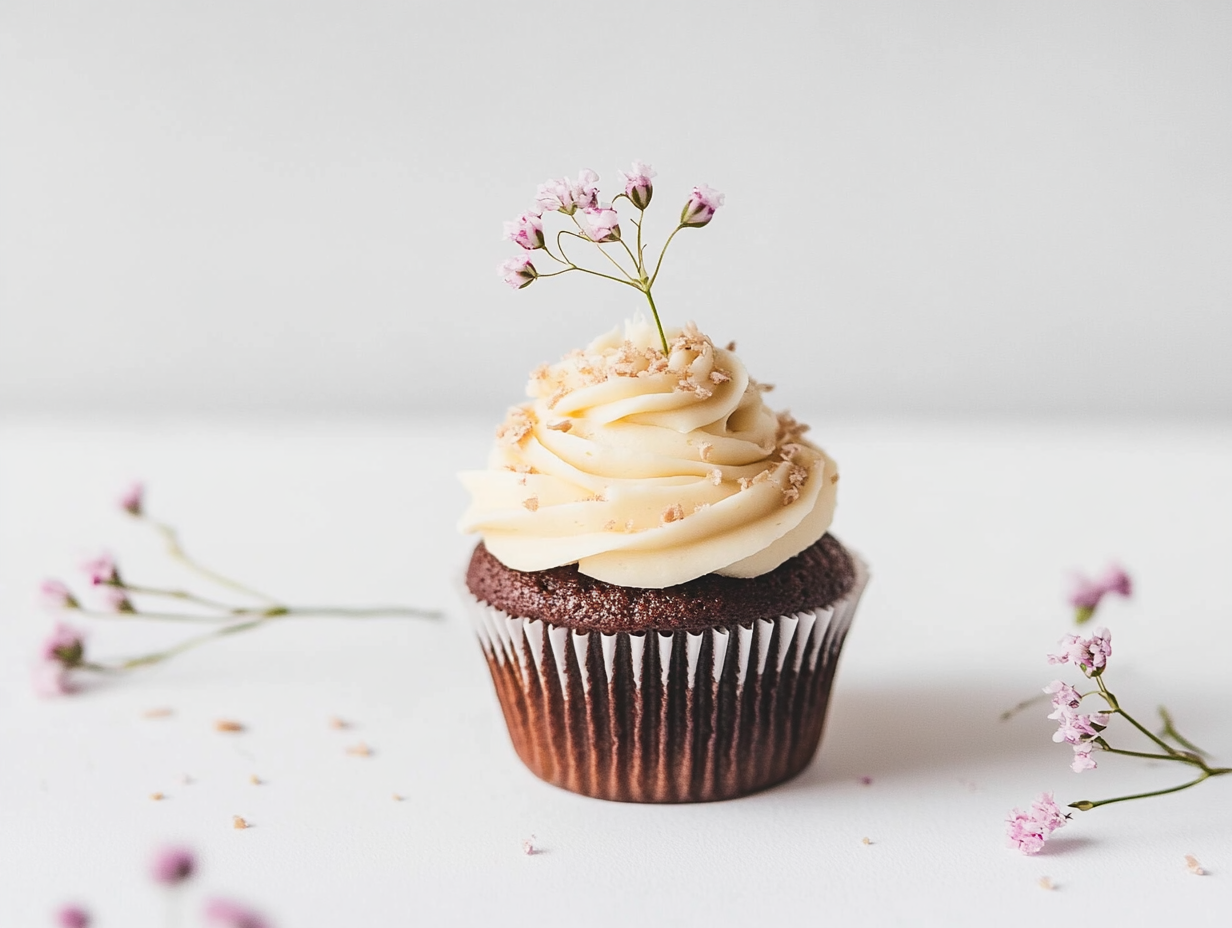
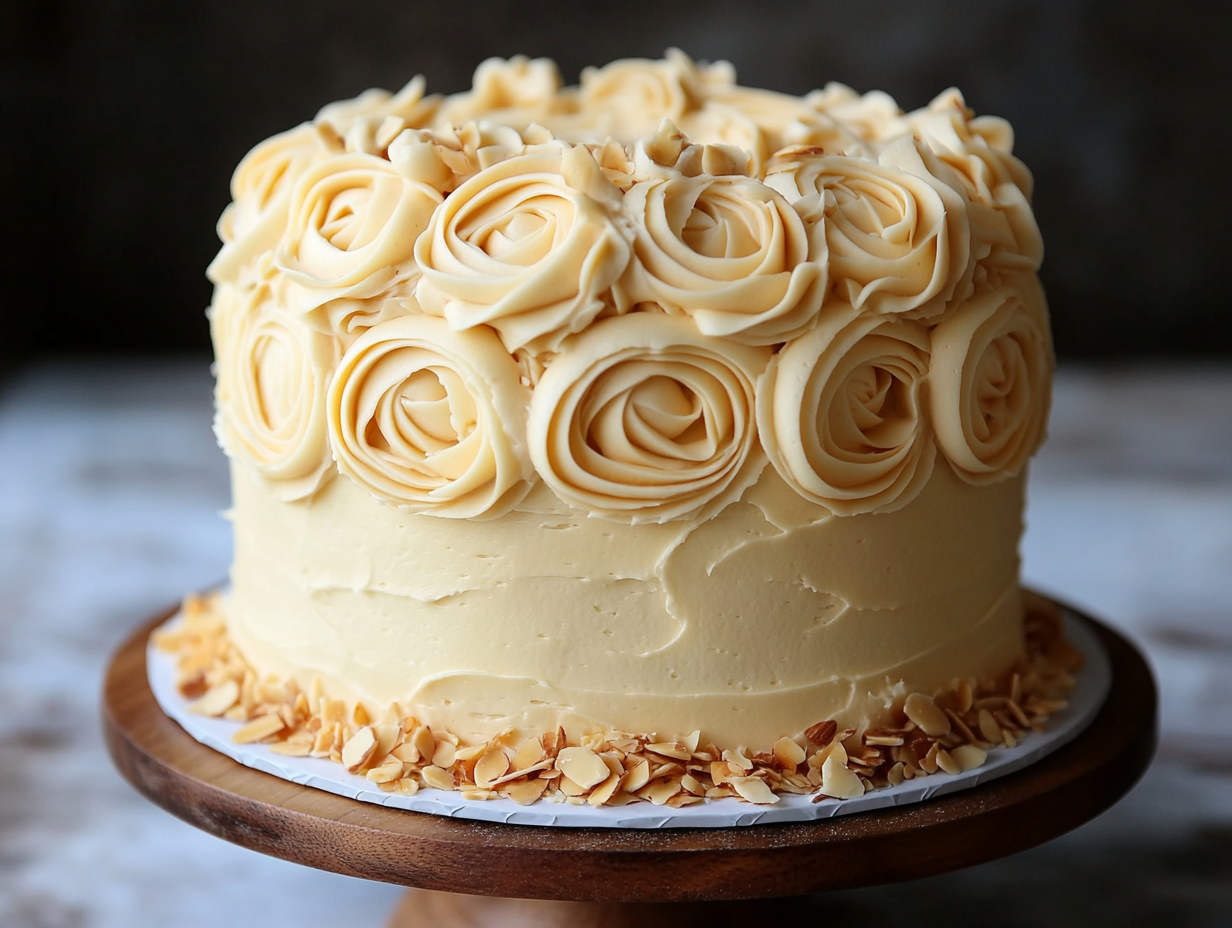
Cookies and Brownies
Almond buttercream frosting adds a unique twist to cookies and brownies, transforming these classic treats into gourmet delights. For cookies, especially sugar cookies or shortbread, the almond frosting provides a creamy, nutty layer that complements the buttery base. It can be piped decoratively, making it perfect for holiday cookies or special occasions. Meanwhile, brownies benefit from the rich, nutty flavor of almond buttercream, which contrasts beautifully with the dense, chocolatey texture. This combination creates a decadent treat that appeals to both almond and chocolate lovers alike. Whether you’re frosting a batch of cookies for a party or elevating your favorite brownie recipe, almond buttercream can take these desserts to the next level. Its versatility allows for creative presentation and flavor pairing, ensuring each bite is as visually appealing as it is delicious. This frosting not only enhances the taste but also adds a touch of elegance to everyday baked goods.
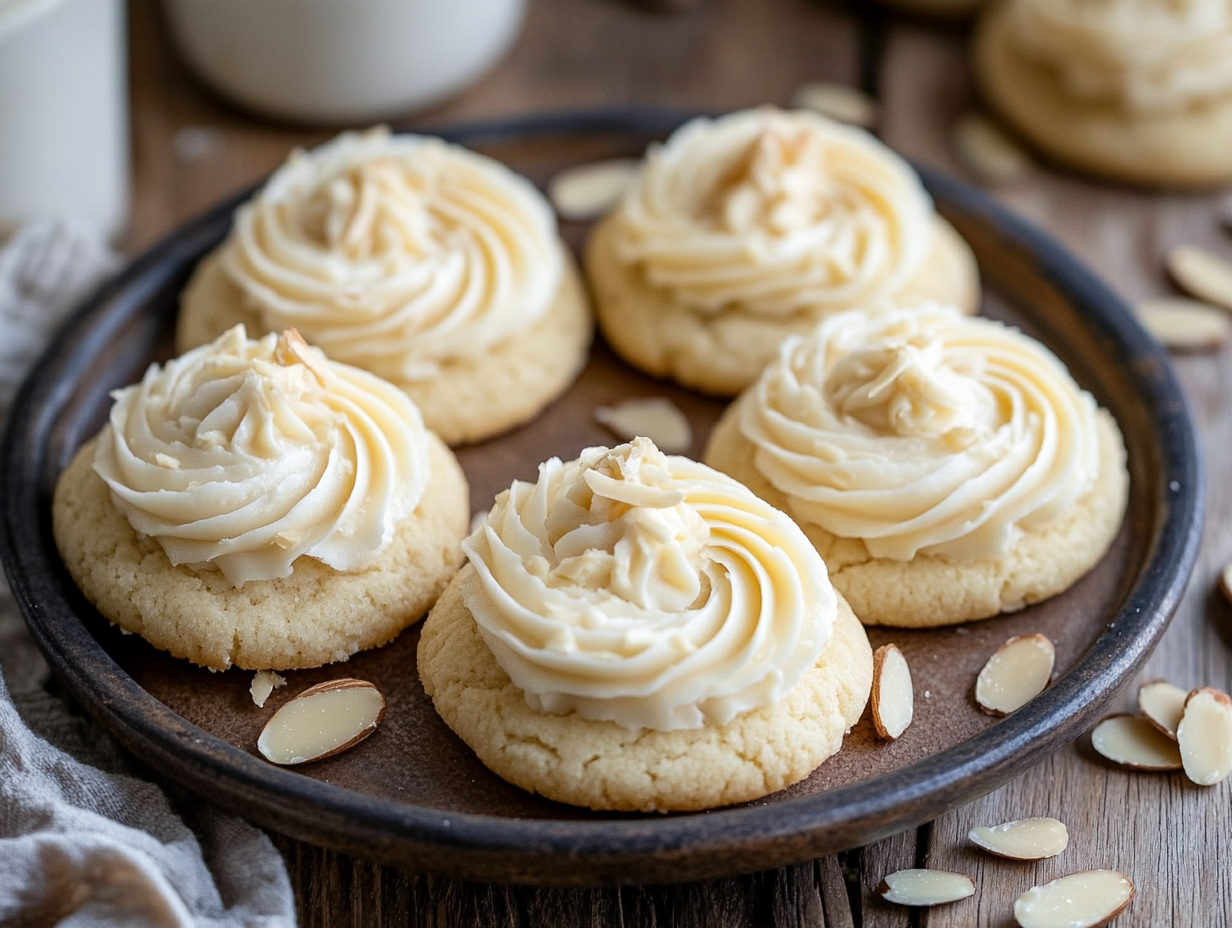
Flavor Variations to Explore
Vanilla and Chocolate Twists
Almond buttercream frosting is wonderfully adaptable, allowing bakers to experiment with flavor variations like vanilla and chocolate. To create a vanilla almond buttercream, simply add a touch of pure vanilla extract to the mix. This addition enhances the overall sweetness and aroma, creating a harmonious blend that pairs beautifully with a wide range of desserts. For chocolate lovers, incorporating cocoa powder or melted chocolate into the almond buttercream can transform it into a decadent chocolate-almond frosting. This variation is perfect for those who enjoy a richer, more indulgent flavor. The nuttiness of the almond complements the chocolate, resulting in a balanced and flavorful frosting. These simple twists not only add diversity to your frosting repertoire but also allow you to tailor the almond buttercream to suit different occasions and taste preferences. Whether you’re making a classic vanilla cake or a rich chocolate cupcake, these variations ensure your almond buttercream always hits the mark.
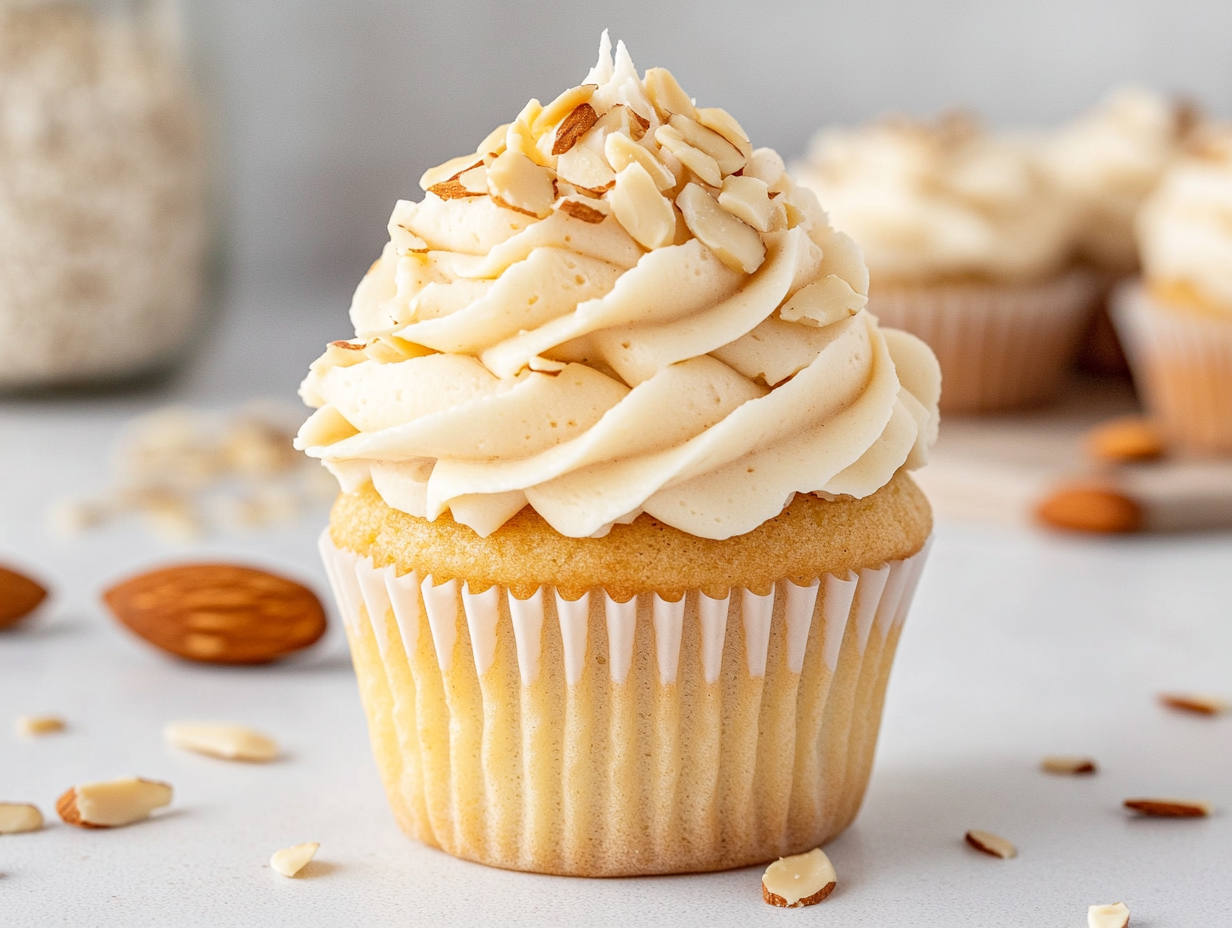
Citrus and Extract Infusions
Infusing almond buttercream frosting with citrus and other extracts can introduce refreshing and unexpected flavors. For a bright, zesty twist, consider adding lemon or orange zest to the frosting. The citrus oils enhance the almond’s nutty undertones while providing a lively contrast, perfect for summer desserts or light, fruity cakes. A few drops of fresh citrus juice can also be mixed in to boost the tanginess without overpowering the almond essence. Beyond citrus, experimenting with extracts like coconut or peppermint can yield intriguing variations. Coconut extract pairs well with almond, offering a tropical flair, whereas peppermint can create a festive combination ideal for holiday desserts. These infusions not only enhance the flavor complexity but also allow for seasonal adaptations of your almond buttercream frosting. By using citrus and extract infusions, bakers can craft a frosting that is as unique as it is delicious, catering to diverse tastes and occasions.
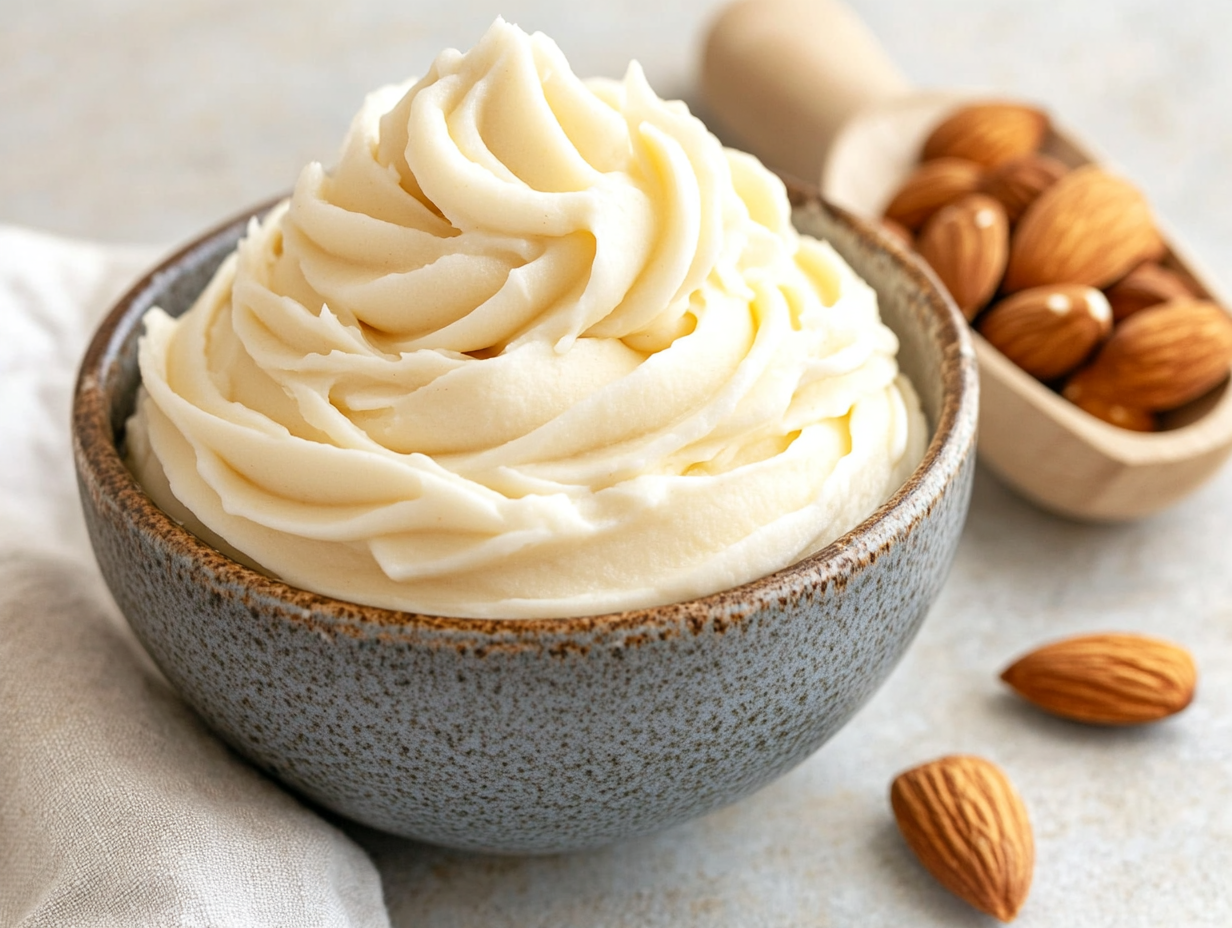
Frosting Perfection Tips
Achieving Ideal Consistency
Achieving the ideal consistency for almond buttercream frosting is crucial for both taste and presentation. The perfect almond buttercream should be smooth, creamy, and easy to spread or pipe. To start, ensure all ingredients, particularly butter, are at room temperature. This helps in creating a smooth mixture without lumps. Gradually add powdered sugar to avoid a gritty texture, and mix thoroughly until the frosting is light and fluffy. If the frosting is too thick, a splash of milk or cream can help achieve the desired consistency. Conversely, if it’s too runny, adding more powdered sugar can thicken it to the right level. It’s essential to beat the frosting well after each addition to ensure it’s well-blended and aerated. Achieving the right consistency not only enhances the frosting’s appearance on cakes and cupcakes but also ensures it holds its shape when piped, making your desserts look professionally finished.
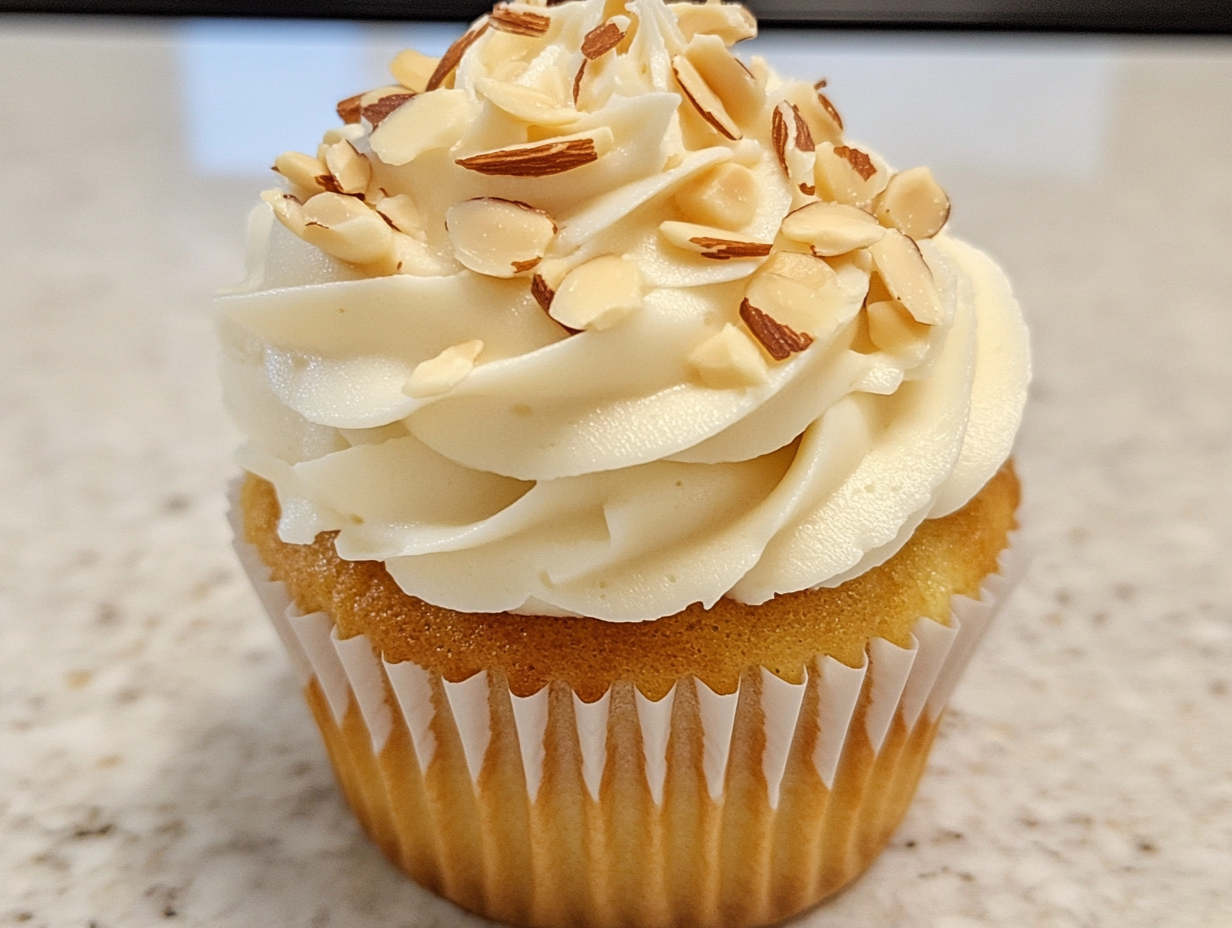
Piping and Storage Advice
When it comes to piping almond buttercream frosting, preparation and technique are key. Ensure your frosting is at the right consistency—smooth enough to flow easily through the piping bag but stiff enough to hold its shape. If the frosting is too soft, refrigerate it briefly to firm it up. Using high-quality piping bags and tips will also make the process smoother and more precise. For intricate designs, start with a small tip, practicing on parchment paper before applying it to your dessert.
As for storage, almond buttercream can be kept in an airtight container in the refrigerator for up to a week. Before using chilled frosting, let it come to room temperature and re-whip it to restore its creamy texture. For longer storage, almond buttercream can be frozen for up to three months. Thaw it in the refrigerator, then bring it to room temperature and whip it again before use to ensure it returns to its original consistency.
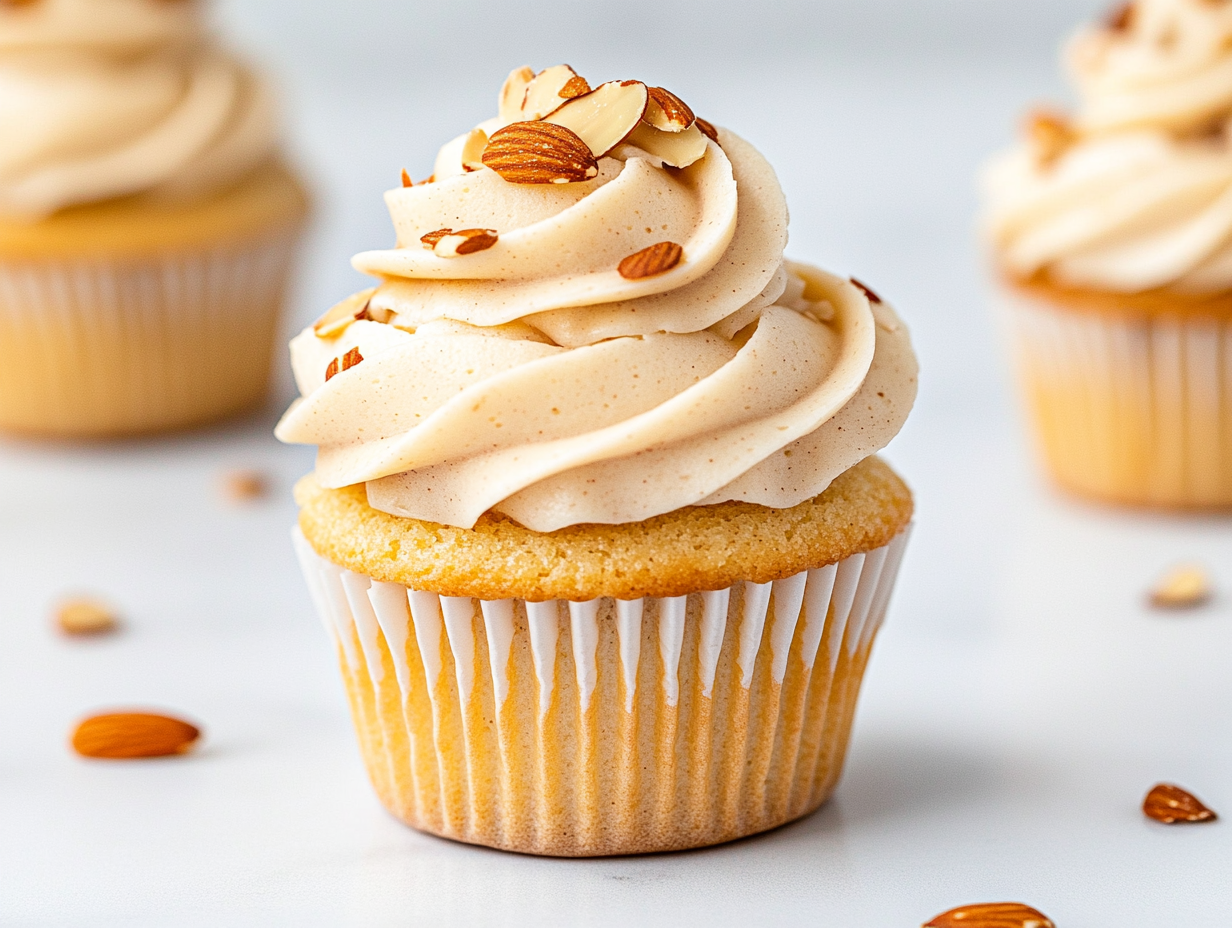


Not to nutty